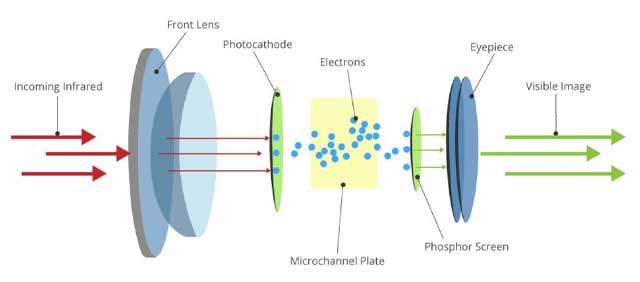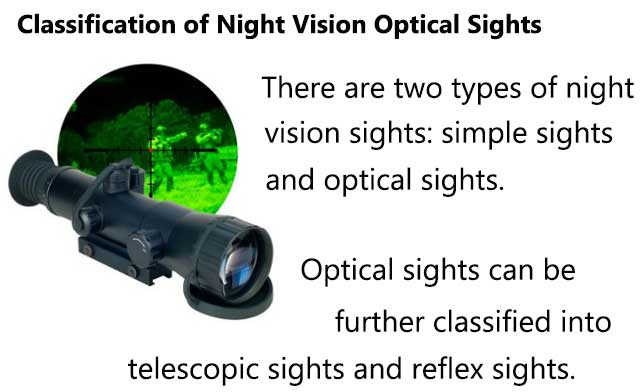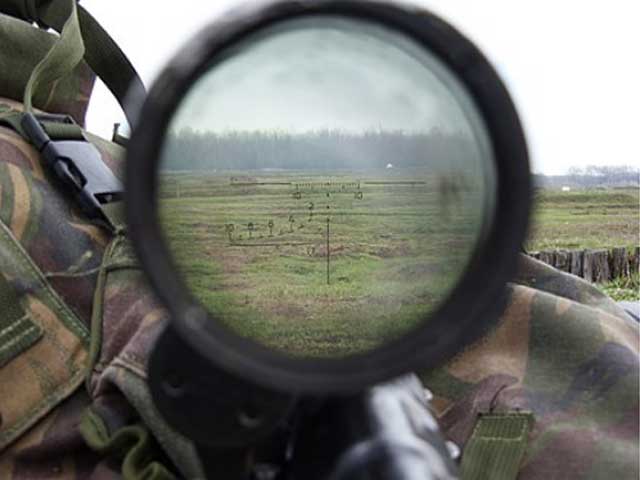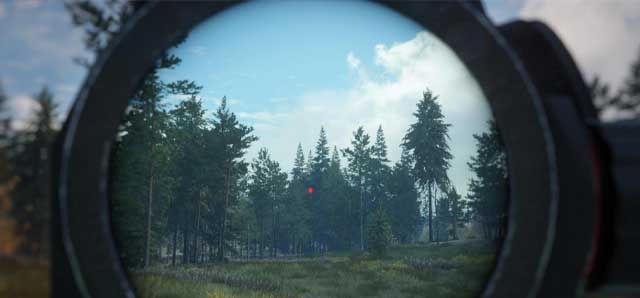
Engineer Manager Name: Jacky
Email: mh_elec@126.com or jacky@mh-elec.com
The Night Vision Scope is the hunters ultimate tool when shooting in the dark. A Night Vision Scope uses an Image Intensifier Tube (IIT) to amplify photons of light in order to give the shooter a clear picture even in the darkest conditions.
A Night Vision Scope can come in the form of a dedicated rifle scope, a digital rifle scope or a clip-on night vision device. Clip-on night vision devices add a huge range of versatility to an existing set up.
A. How Night Vision Works?

Night vision technologies fall into two broad categories: image intensification (light amplification) and thermal imaging (infrared). The majority of consumer night vision products are light amplification devices. Light amplification technology converts light energy (what scientists call photons) into electrical energy (electrons) by taking a small amount of light in the surrounding area, such as moonlight or starlight. These electrons travel through a thin disk about the size of a quarter, containing over 10 million channels.
When the light irradiates the photocathode, it is converted into photoelectrons. Under the action of the electric field, the photoelectrons continuously collide with the MCP tube wall of the microchannel plate to generate secondary electrons, achieving a gain of up to 1000 times. The photons are converted back through the phosphor screen and passed through a 1:1 high-flux relay lens, and finally imaged on the imaging surface of the camera, so that even in very dark conditions, impressive nighttime views can be seen.
B. Development of Night Vision Scope
As we all know, the core of night vision imaging is the image intensifier tube. In the night vision world there are generations that reflect the level of technology used. The higher the generation, the more sophisticated the night vision technology.

1. Night Vision Gen 1 :
Most Gen 1 equipment uses similar technology and thus image tube performance does not vary too much between similar Gen 1 products. What does make a performance difference in Gen 1 products is the quality of the lenses, the controls, and the devices’ design.
2. Night Vision Gen2:
This is base quality Gen 2 that is a huge step up from Gen 1. Comparing base level Gen 2 to Gen 1 would be like comparing a motorcycle to a bicycle-they both have 2 wheels but that’s about it. These image tubes will have more imperfections and lower performance than higher level Gen 2 gear. These are known as standard Gen 2 or standard tube.
3. Night Vision Gen 3 :
This gets you the real deal, Gen 3. These will usually have more imperfections/blemishes and lesser performance than the higher levels of Gen 3 however they still give great overall performance and will last you about 10,000 hours plus, which is much longer than the lower generations.
C. Night Vision Sight
A sight is an aiming device used to assist in visually aligning a remote weapon, measuring instrument or optical lighting device with a predetermined target. Sights can be a simple physical token device or system, must be aligned with the target (such as iron sights on firearms), or optical devices, allowing users to see the same focus on aiming point by optical enhancement - usually amplification of target image, such as the telescope sights, reflection sights and holographic sights).

a. Telescopic sights

A telescopic sight is a refracting telescope equipped with some form of referencing pattern (reticle) mounted in an optically appropriate position in the optical system to give an accurate aiming point. Telescopic sights are used on a wide range of devices including guns, surveying equipment, and even as sights on larger telescopes (called a finderscope).
b. Reflector sights
Another type of optical sight is the reflector (or "reflex") sight, a generally non-magnifying optical device that allows the user to look through a glass element and see a reflection of an illuminated aiming point or some other image superimposed on the field of view.[5] These sights have been around for over 100 years and have been used on all types of weapons and devices.

Reflector sights were first used as a weapon sight in German aircraft towards the end of World War I. Over the years they became more sophisticated, adding lead computing gyroscopes and electronics (the World War II Gyro gunsight) radar range finding and other flight information in the 1950s and 60s, eventually becoming the modern head-up display.
Engineer Manager Name: Jacky
Email: mh_elec@126.com or jacky@mh-elec.com
